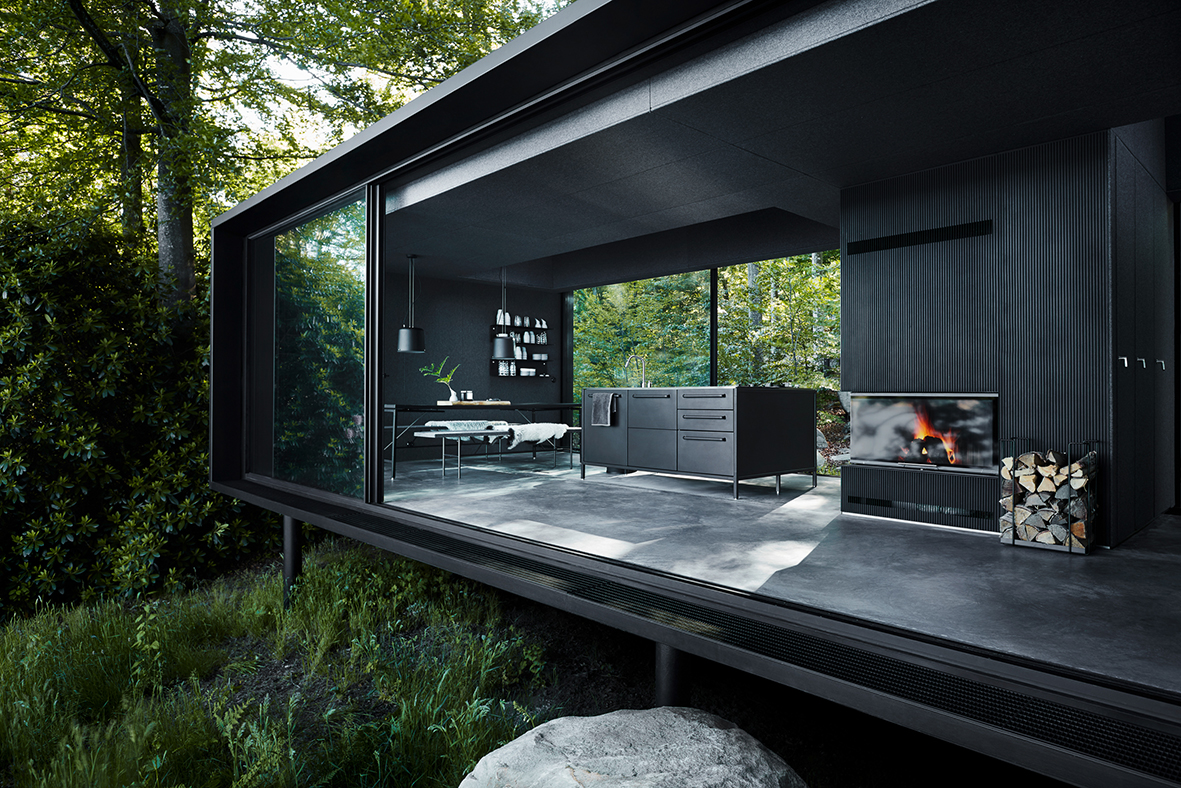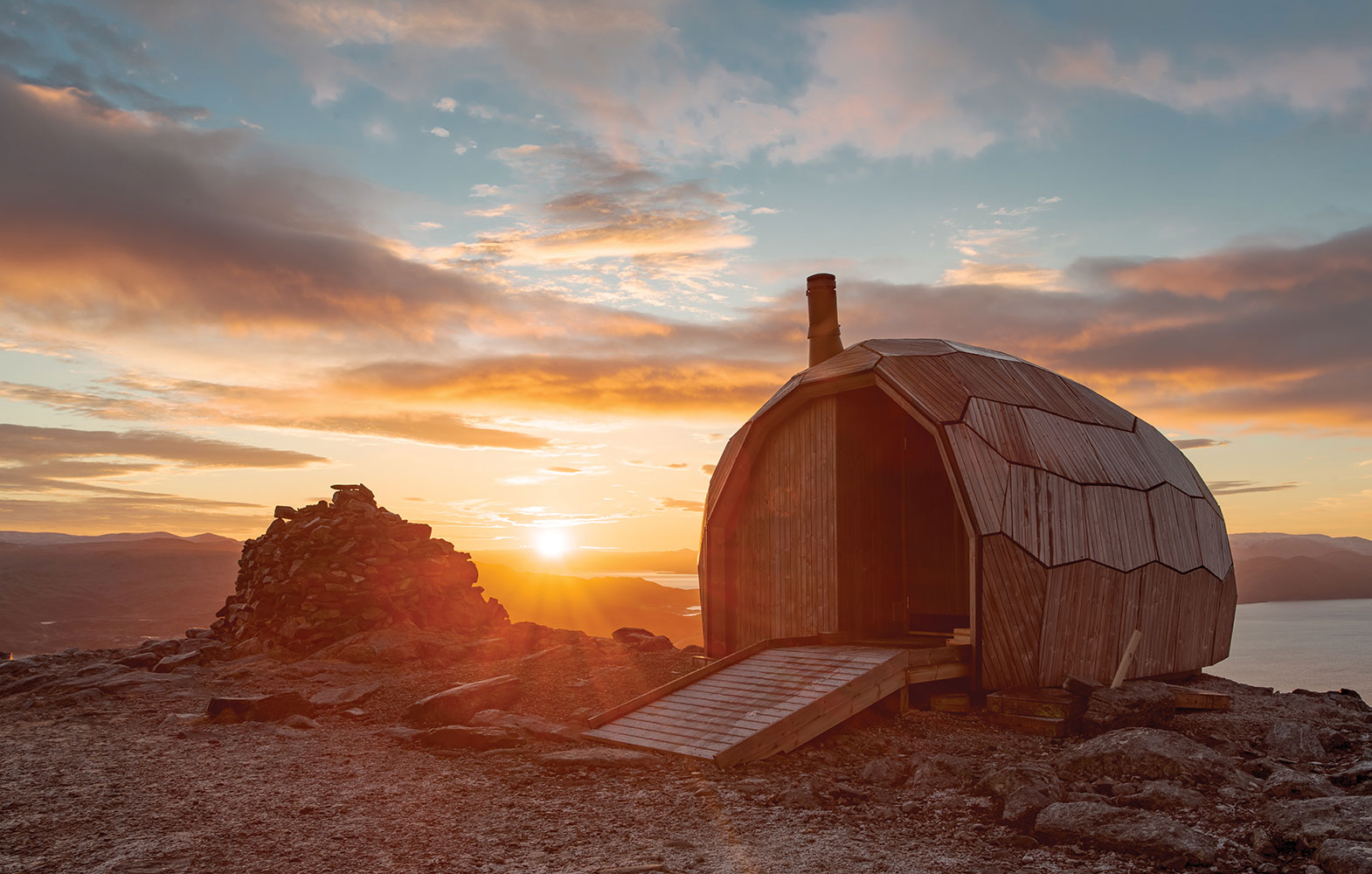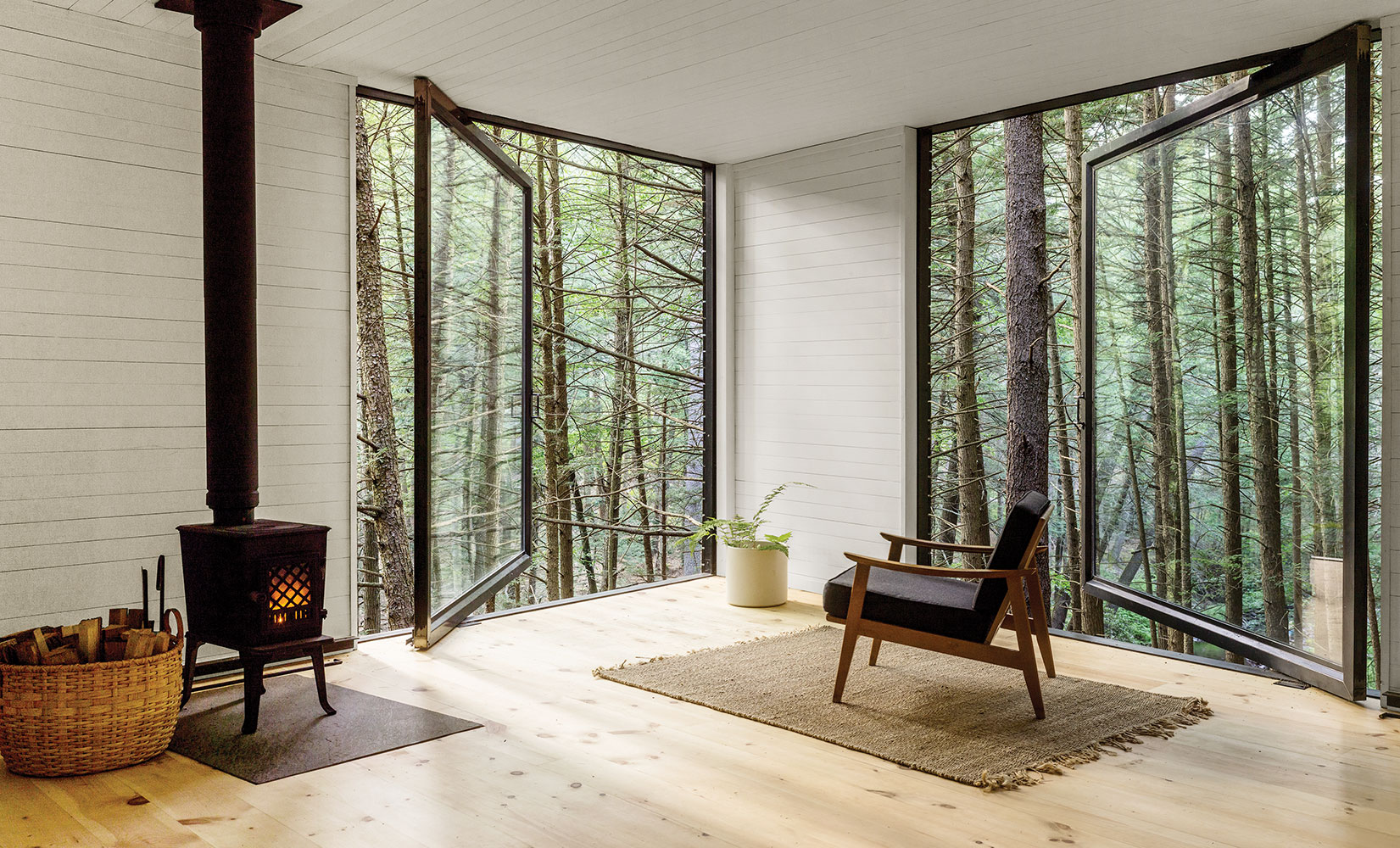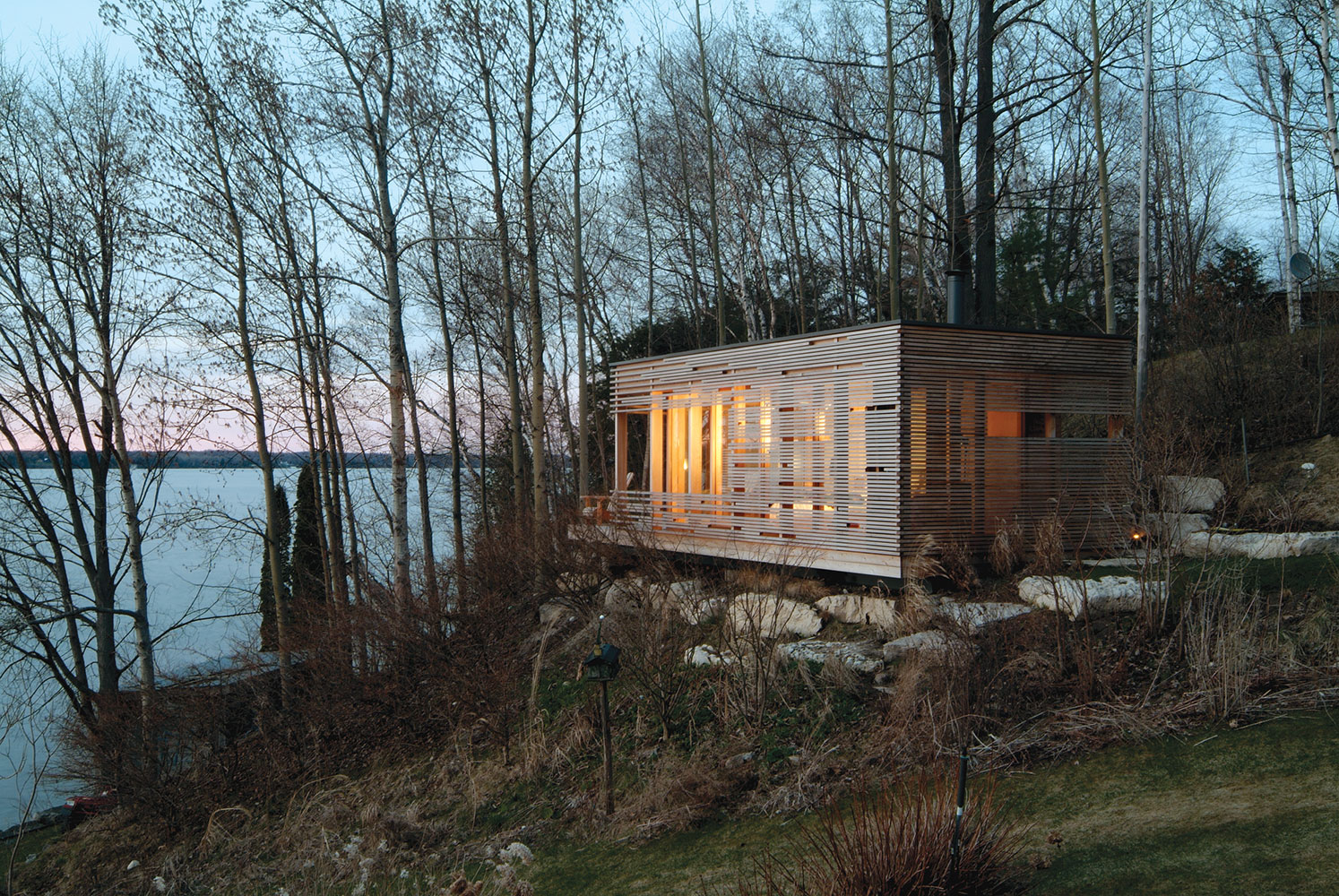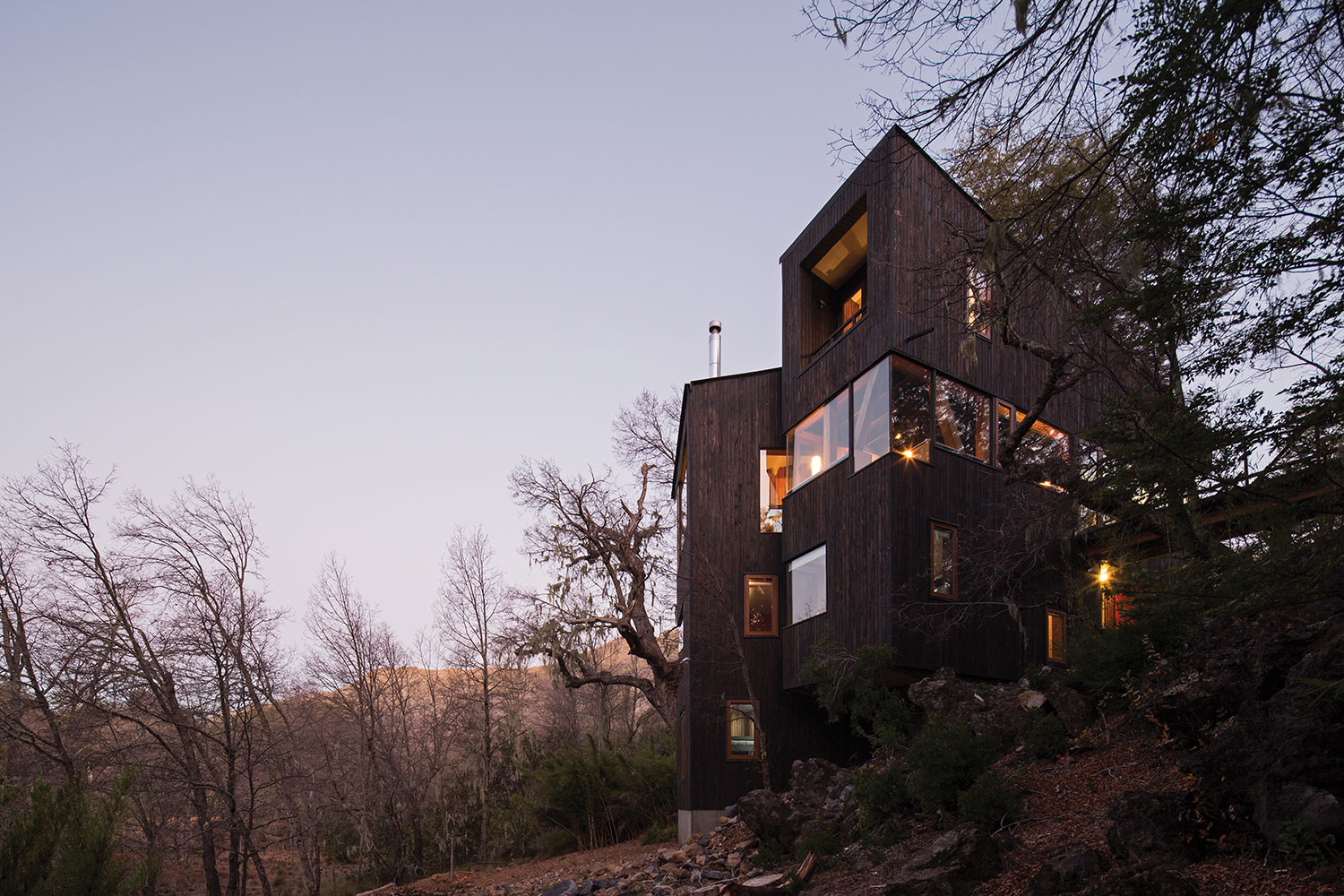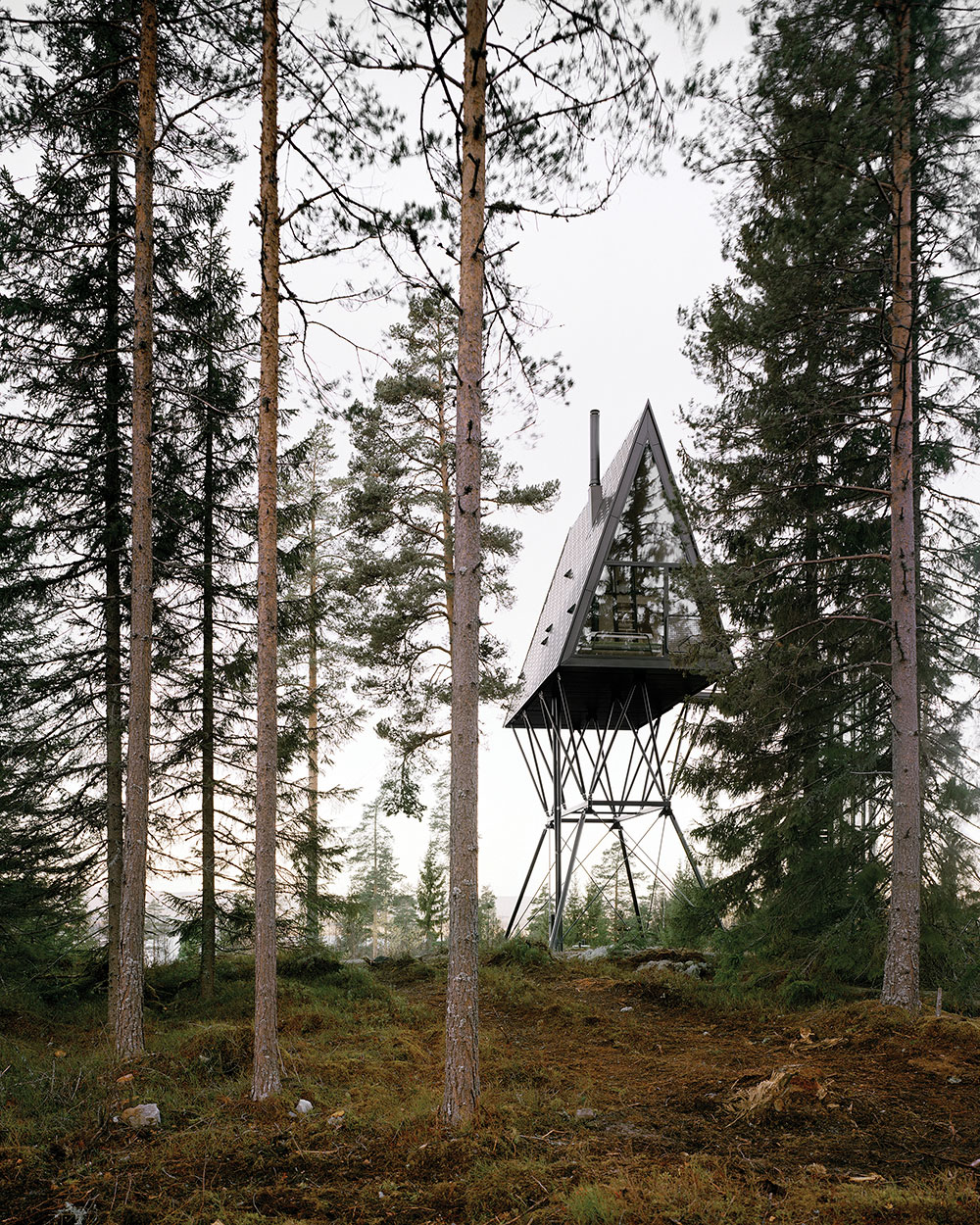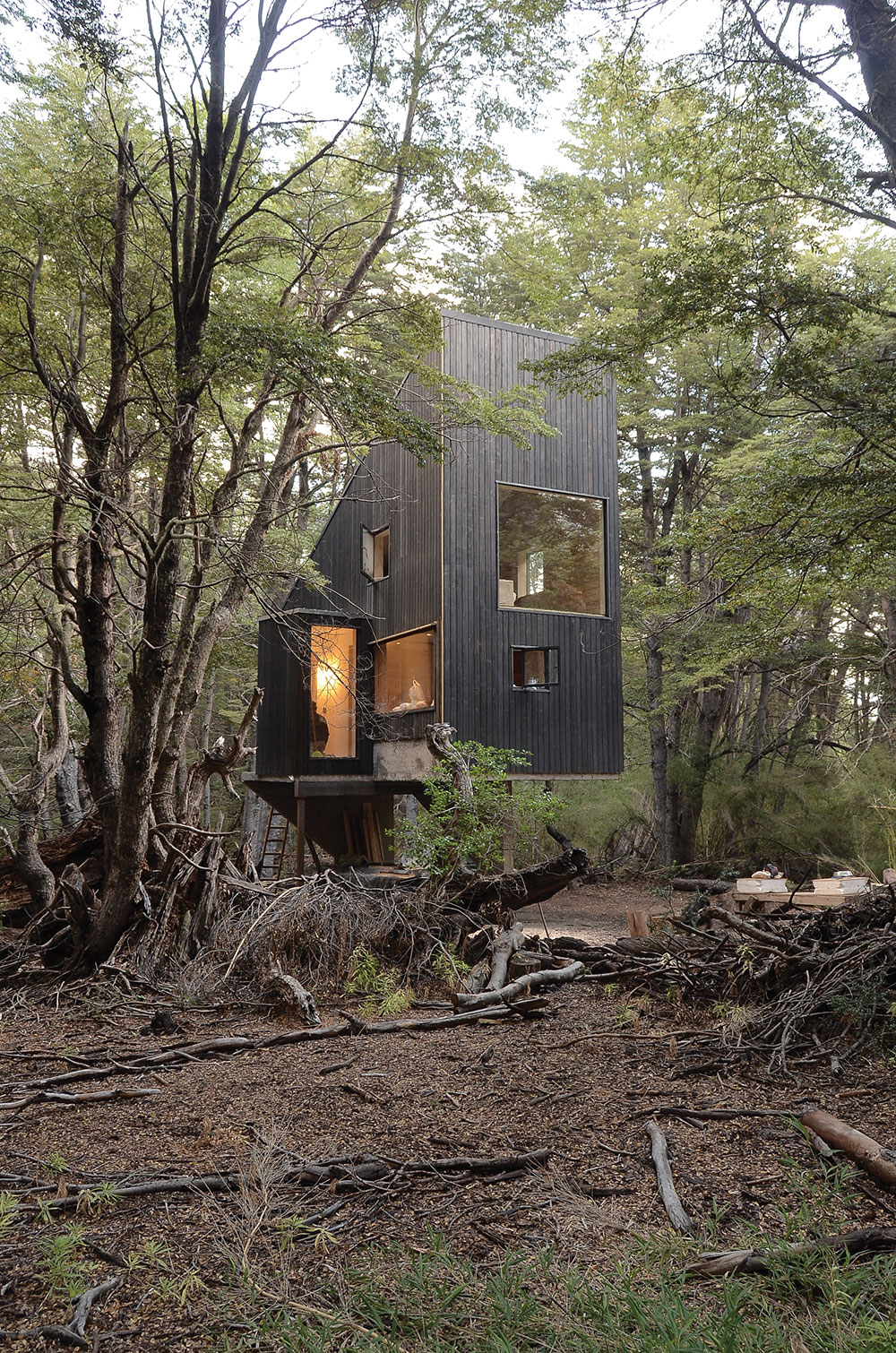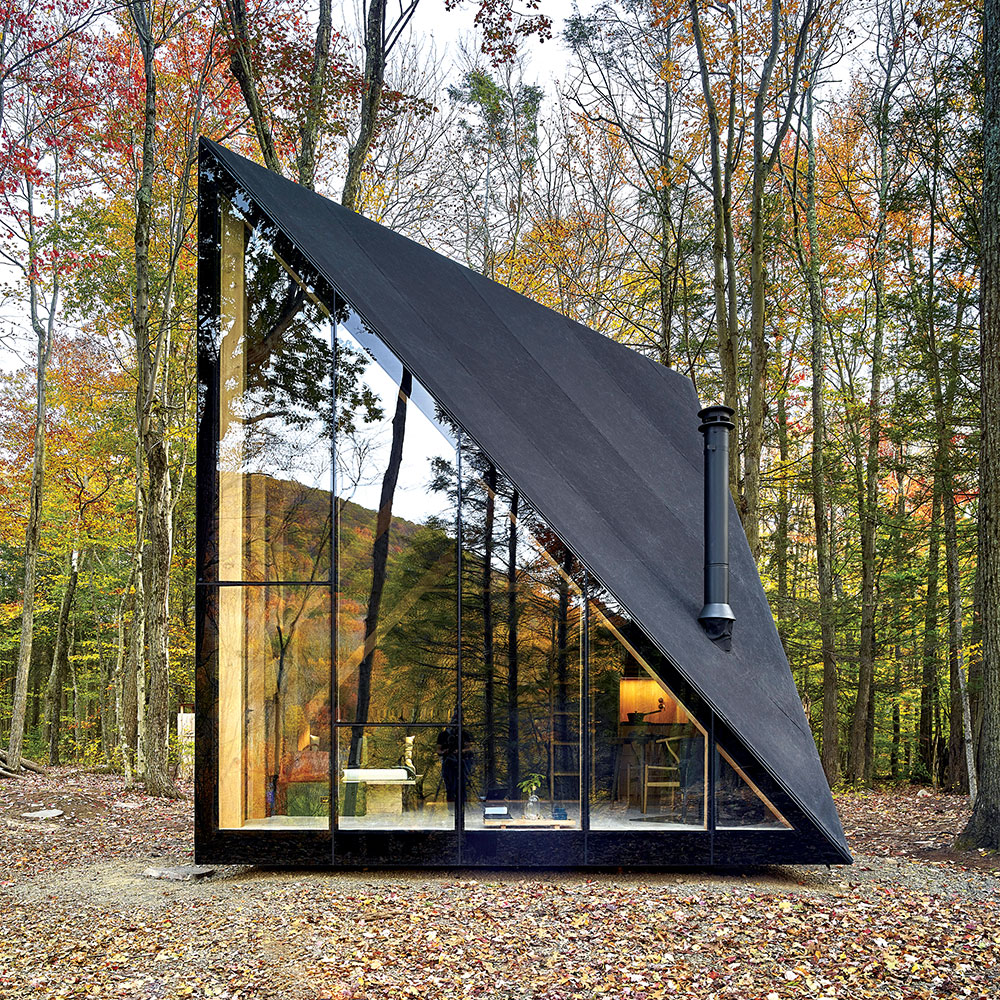—Geometric panels, steel micro dwellings, a mysterious wooden façade — cabin architecture is inspiring designers with the spirit of seclusion.
Living in a big city means that every day is fast-paced—hours slip through our fingers and our thoughts are never settled. Everyone unwinds in different ways but there seems to be a resurgence in escaping the city and residing alone in the depths of nature. This practice has inspired some of the world’s greatest writers, musicians and artists. From Emily Dickinson and Russian composer Pytor Illich Tchaikovsky to modern recluses such as Banksy and Frank Ocean, there’s always been an aura of romanticism surrounding the idea of seclusion, if only temporarily.
In architecture, nothing speaks to the mystery of solitude quite like a cabin in the woods. These days, designers and developers alike are designing sustainable, minimal, and often luxurious living quarters that are purposely located away from towns and cities. Meant to blend in with their surroundings—although some are both obvious and unique—these cabins provide an elevated vision of isolation. Beneath their geometric panelings and high skylights, each structure preserves its connection to the natural world in complete and total seclusion.
Vipp Shelter
Lake Immeln, Sweden
Located 93 miles outside of Copenhagen, Danish retailer Vipp created a steel and glass micro-dwelling in a lakeside corner of the Swedish woods in Skågen County. Conveniently located for both adventurous or aloof visitors, the prefab is meant for unplugging and exploring the surrounding beauty of nature. Vipp Shelter features an all-black interior, a skylight in the bedroom and floor-to-ceiling windows for maximum exposure to the world outside. It also comes with a fully-equipped kitchen, fireplace and heated floors, and a walk-in shower stocked with Aesop body care products. With tons of natural light leaking into the cabin, it is impossible to ignore the sparkling Lake Immeln right outside. The Vipp Shelter features a private wooden pier ideal for canoeing or fishing. There are numerous bays and hundreds of islands on Lake Immeln which makes it perfect for spending days exploring or swimming and laying out under the sun.
Dagsturhytter
Hammerfest, Norway
Most hikers are elated to reach the summit of a mountain and experience its breathtaking views. In an effort to boost tourism and keep wilderness junkies in mind, SPINN Architects designed cabins that are placed at the very top of the fjords of Hammerfest, Norway. Much like a three-dimensional puzzle, Dagsturhytter was assembled using 77 wooden panels that were meant to replicate the stones and boulders of their surroundings. Their angled shape naturally prevents snow or rain from puddling on top, therefore preventing weather damage. Through the use of 3D laser scanning technology, the designers were able to shape the windows and doors with wind direction, views and accessibility in mind. The two rounded cabins are used to welcome explorers and offer a space for them to eat their packed lunches and comfortably experience the beauty of their surroundings while being protected from the weather. From its panoramic vantage point, Dagsturhytter reigns over the fjords with a humble, yet sophisticated presence.
Half-Tree House
Beaver Brook Preserve, New York
When Zach Klein bought property on the Beaver Brook Preserve back in 2015, he, and soon after, his wife Courtney did not realize a cabin in the woods would turn into a community. Although they don’t picture themselves settling at Beaver Brook anytime soon, the property and its surrounding creek, suspension bridge, bunkers and tub were all built by their own hands and the help of various volunteers. Zach’s original purpose for the cabin was to take a step back from a world in tech and finance and reconnect with nature. The couple began by inviting fellow creatives to join them and hang in the woods for weekends at a time. Eventually, the Klein’s needed some help making sure the property was structurally sound. They were able to work with a team of ripe professionals and eager amateurs to secure the award-winning cabin, and eventually build the rest of the preserve. Today, members are welcome to visit the preserve and add on anything they want to the property, with the condition that it does not cause irreversible change to the cabin.
Sunset Cabin
Lake Simcoe, Canada
50 miles outside of Toronto is Lake Simcoe. Here, Taylor Smith Architects were tasked with building a simple cabin with lakeside and, as the name indicates, sunset views. To prevent intruding on the land, they built the cabin in an empty parking lot, numbered each piece, and assembled it on its current plot. Sunset Cabin features a green roof, meant to help it blend into the woodland around it, while offering unobstructed views of the lake from its one-room interior. Featuring only a bed with built-in drawers, a wall of storage cabinets and a wood burning stove, the owners wanted this petite addition to be used as a private retreat from their main home on the property. As seasons change, so does Sunset Cabin’s façade. When the woodland vegetation is in full bloom, the trees drape across the abode camouflaging it from plain view. In the colder months, its horizontal cedar slats contrast yet complement the vertical nature of the surrounding trees.
La Dacha Mountain Retreat
Las Trancas, Chile
Chilean-based architecture firm Del Rio Arquitectos Asociados (DRAA) are in the business of sprinkling modern cabins within Chile’s native woodlands. These projects are meant to share the beauty of these unique landscapes with visitors. La Dacha Mountain Retreat, though it aesthetically appears similar to the firm’s Shangri-la project, was designed specifically for the plot of land it was placed on. Designed in a unique vertical V-shape, its second level floor-to-ceiling windows follow the sun’s path from rise to set while also serving as the entry floor to the home. Constructed from SIP board and Lingue wood, the home is a highly insulated mountain escape that keeps environmentalism in mind. The designers included a masonry stove that only requires one load of wood per day, and is meant to release heat at a constant rate for long periods of time. The walls and windows are specially insulated to keep harsher climates out. Panoramic views, warm spacious living areas and the opportunity to explore some of the oldest forests in the world make this cabin a must-visit.
Panhytter
Asnes, Norway
If you’ve ever wondered what a woody area must look like from the very top of a tree, architectural firm Espen Surnevik has made that view a reality. PAN treetop cabins are placed in Asnes, Norway and are built on top of slender steel structures that resemble stilts. Built in an A-shape, Panhytter resembles the points of its surrounding woodland, or rather the tops of the trees, and features a bathroom, kitchen, living area and a fireplace. Unlike the previous cabins, which are made of mostly wood, Panhytter is made out of steel and various metal alloys with the intention of indicating the project as an “intervention in the forest.” Although the intrusion of Panhytter is obvious to visitors, its shape and exposure still manages to harmonize with the world around it.
Shangri-la Cabin
Chillán, Chile
This Chilean getaway is the first cabin designed and built by Del Rio Arquitectos Asociados (DRAA) and Magdalena Besomi. The cabin and its upcoming counterparts are part of a project meant to populate Chile’s native woodlands. The home has a diagonally-shaped roof that points toward the sky much like trees do as they reach for sunlight. Shangri-la sits on a thin concrete platform, minimizing its impact on the ground. Its angles change depending on one’s point of view for both visual interest and to complement the angular shape of the cabin itself. The interior is lined with timber planks that were reused from fallen trees, while the outside is covered with charred pine. Shangri-la’s interior layout was designed in layers as to evoke a “nook” feeling for each individual space (bathroom, bedroom, kitchenette, and sitting room). The sitting room features a large window that offers panoramic views of the woods.
A45
Shandaken, New York
Architecture firm Bjarke Ingels Group (BIG) and up-and-coming housing developer Klein came together to create a tiny abode in Hudson Valley, New York. The prototype, named A45, is built in an A-shape to complement similarly constructed cabins in the area—a design style that dates back as far as the 1960s. Made from recycled materials, the home is meant to be sturdy and easily constructed (Klein promises to deliver a home to people within six-months of purchase). A45 evokes cozy, simple living in order for its inhabitants to focus on nature. The house has an open floor plan and its amenities are stripped down to the bare essentials featuring a kitchenette, fireplace, bathroom and a bed. But don’t be fooled, the home is decked out with hardware and appliances from Danish firms VOLA, Carl Hansen & Son, and Soren Rose Studio to name a few. The floor-to-ceiling windows allow guests to stay connected with the world around them, and what the home lacks in size, it makes up for in its true purpose, to get people out into nature and off their phones.
The post Cabin Fever appeared first on VUE magazine.

